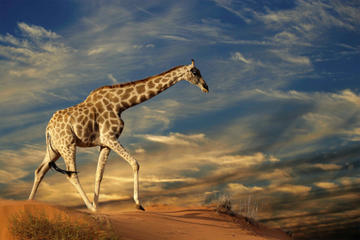Kalahari Desert
TIME : 2016/2/22 12:06:20

Kalahari Desert
The famous Kalahari Desert spans some 900,000 square kilometers of desolation between the borders Namibia and Botswana. Its semi-arid savannah is home to more vegetation than the Namib Desert to the west, so after heavy rains it’s possible for travelers to catch gazelle, kudu and springbok grazing the plains. Because the desert lacks any permanent source of water, wildlife tend to flee in search of sustenance during the dry season.
The Kalahari Desert is home to several private game reserves including the Central Kalahari Game Reserve, which is the second largest protected wildlife area in the world. Visitors to this park will find plenty of wildlife, including hyenas, jackals, gemsbok, and giraffes, as well as a number of indigenous species of birds and reptiles. The Kalahari’s limited vegetation and lack of water does little to support the existence of Africa’s Big Five, though lucky travelers may spot an elephant or two after seasonal rains.
Though wildlife may be one of the main draws for visitors making the trip to Namibia, the San people, a group of nomadic hunter-gatherers who have called the Kalahari home for some 20,000 years are part of what makes a voyage to this desert so unique. Travelers can learn about how these people have survived off this unforgiving land for thousands of years by gathering edible berries and plants and burying sparse water supplies in ostrich eggs. Practical Info
It is possible to access the Kalahari Desert from the southern cities of Gobabis or Mariental. Rainy season lasts from April through October and travelers will find vegetation and wildlife at their peak during this season.
